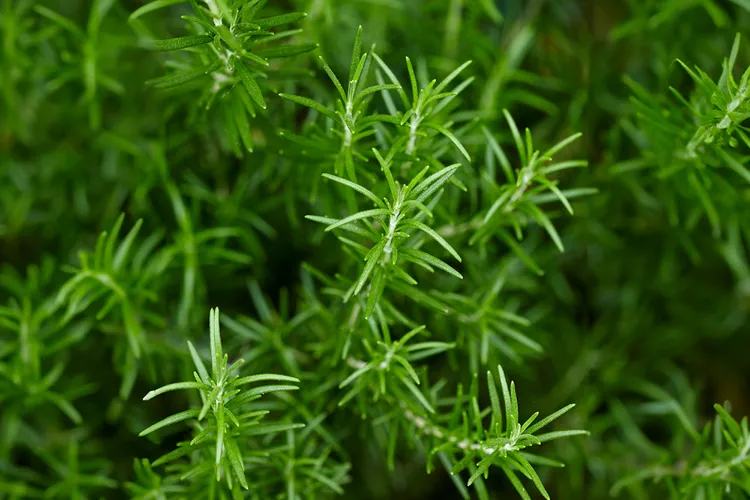Rosemary (Salvia rosmarinus syn. Rosmarinus officinalis) is a fragrant and delicious culinary herb that's popular with both gardeners and cooks. And knowing how to propagate rosemary is a budget-friendly way to multiply this plant as much as you like. The easiest way to grow lots of new rosemary plants from a single mother plant is to root stem cuttings in either soil or water. Follow these tips and step-by-step instructions to get started.
Best Time to Propagate Rosemary
Rosemary can be propagated at any point during the growing season, but the best time to take rosemary cuttings is in late spring to early summer, before the plant flowers. If you want to overwinter rosemary cuttings indoors, take stem cuttings in autumn before frost hits, but check them carefully for pests before bringing them inside.
How to Propagate Rosemary Cuttings in Soil
Rooting rosemary in soil takes a little more time than water propagation, but it’s handy because the cuttings root in pots and may not need to be transplanted later on.
Step 1: Take stem cuttings.
Snip 3- to 6-inch-long cuttings from healthy rosemary stems using sharp, clean garden shears or scissors. Clip cuttings directly above a leaf node to encourage the mother plant to branch. Remove any leaves on the lower 2 inches of the cuttings with your fingers.
Look for rosemary stems to cut that are actively growing, flexible, and flush with green leaves. Rosemary plants become woody as they age, and woody stems are much harder to propagate.
Step 2: Apply rooting hormone.
Dip the cut ends of the rosemary stems in water and dab them in a dish of rooting hormone powder. Rooting hormone isn’t strictly required, but it helps cuttings root faster and can ward against rot.
Step 3: Plant the cuttings.
Fill up small pots with a well-draining, potting mix or damp sand and poke narrow planting holes in the substrate with a pencil or chopstick. Place a rosemary cutting in each planting hole so that the leaves are above the soil line, and then firm the potting mix around the base of each cutting. If you’re rooting multiple rosemary plants in the same pot, space the cuttings at least 3 inches apart.
Step 4: Provide water, humidity, and light.
Give the cuttings water until it runs out the bottom of the pots. Then, place a clear plastic dome or bag over the cuttings to boost humidity levels around the cuttings and keep the soil from drying out as fast. Set the pots under a grow light or on a windowsill that receives bright, indirect light, and water them regularly so that the soil stays damp but not soggy.
Step 5: Check for roots.
Rosemary cuttings take about four to eight weeks to root in soil. Any cuttings that turn brown or drop leaves during this time aren’t rooting and should be composted. You’ll know the cuttings have rooted when they start to grow new leaves and you can’t easily lift them out of the soil with your fingers. At this point, you can either keep the rosemary cuttings in their original pots, repot them into larger containers, or harden off and transplant the cuttings into your garden after the last frost date of spring.
How to Propagate Rosemary in Water
Rooting rosemary cuttings in water can be tricky because water-propagated herbs are more prone to rotting. However, if you keep your containers clean, this technique is useful, and cuttings usually root even faster in water.
Take cuttings from a rosemary plant as described in the first step above. Then place the cuttings in a clean vase or other vessel with about 1 inch of water, making sure no leaves are sitting below the water line or they will rot. Refresh the water every few days and toss out cuttings that start to brown or drop leaves.
Use a clear glass container to propagate rosemary in water so you can more easily keep track of the water level and spot sprouting roots.
Rosemary cuttings should begin to develop roots in about two to six weeks when propagated in water. After the cuttings develop four or five roots that are roughly a half-inch long, plant the cuttings in potting mix. Keep the cuttings in bright, indirect light and water regularly.
Caring for Rooted Rosemary Plants
When the rooted cuttings start to produce new growth, you can continue to grow your new rosemary plants indoors or harden off the plants and transplant them into your garden after the danger of frost in spring has passed. Established rosemary should receive at least six to eight hours of bright light daily, and it should not be watered too often, because rosemary is prone to root rot. A good rule of thumb is to water rosemary plants only when the top 1 inch of soil feels dry.
Outdoor rosemary doesn’t need much fuss and is relatively resistant to pests. However, rosemary grown indoors is prone to drying out due to dry indoor air. To avoid this, keep rosemary plants on pebble trays or grow them near a humidifier.




















